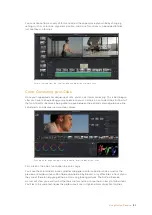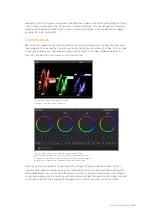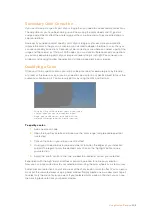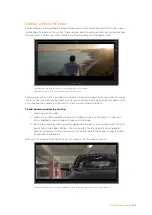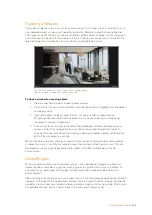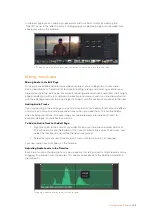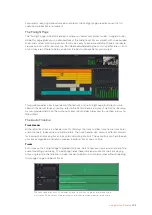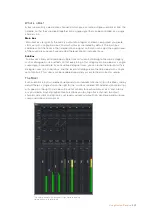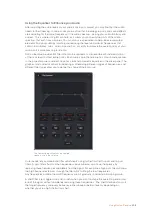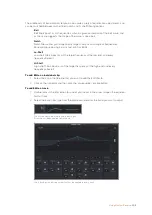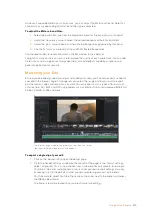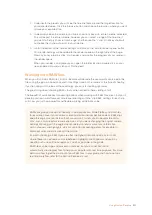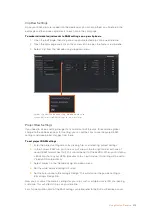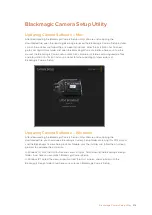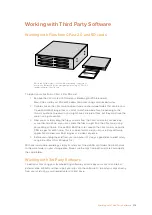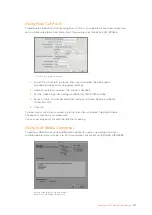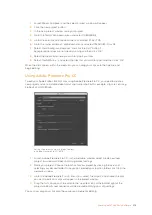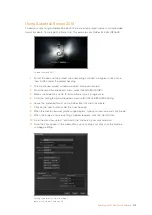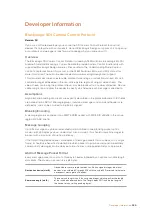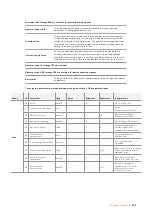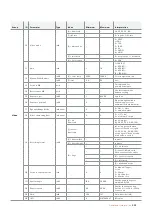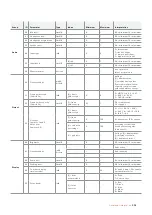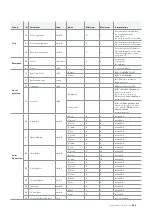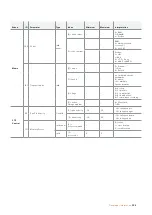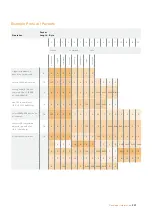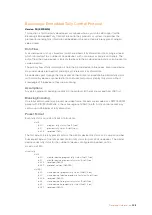
Use the 'exposure' controls, such as the slider in the 'edit cinemaDNG
codec settings' menu to compensate for gain settings.
Adjusting exposure
If you’re familiar with the DaVinci Resolve workflow for other Blackmagic cameras, it’s
worth noting that URSA Broadcast’s ‘gain’ setting is treated a bit differently to the
‘ISO’ setting on Blackmagic digital cinema cameras.
URSA Broadcast’s ‘gain’ settings are applied at your camera sensor, rather than via
software. This is a similar method to how traditional broadcast cameras work, and can
slightly reduce noise at some sensitivity settings. However, it also means that it’s not
possible to adjust URSA Broadcast’s clip ‘gain’ after filming.
You’ll notice that the ‘ISO’ box in DaVinci Resolve’s clip RAW settings will display the
equivalent ISO to your camera’s ‘gain’ setting for the clip, but this value will be greyed
out and you will not be able to change it.
Due to the wide dynamic range of RAW footage, however, you can still make changes
that are functionally equivalent to changing camera gain by adjusting your clip
exposure. Simply adjust the ‘exposure’ value to add or subtract up to five stops of
exposure. Each ‘stop’ is equivalent to one sensitivity step, for example 1 additional stop
of exposure is the equivalent of going from -6 to 0 db of gain, or 200 to 400 ISO,
however you have much finer adjustment here and can go to 0.01 of a stop!
213
Using DaVinci Resolve

